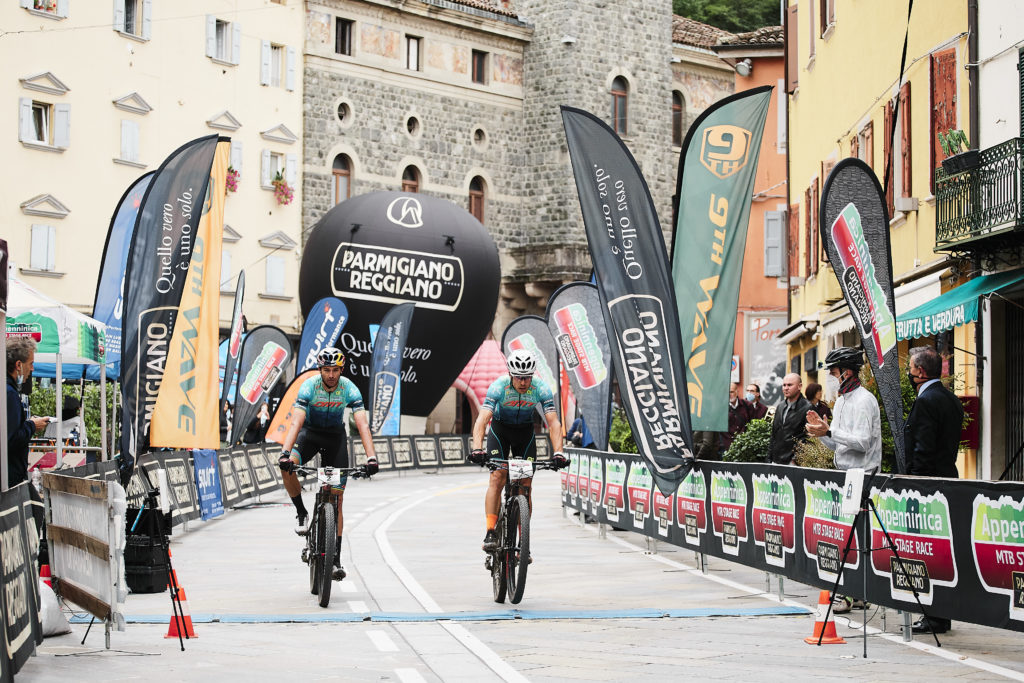MTB stage races used to suit few athletes, their settings were wild and usually remote, and the organizers often relied on the adventurousness of the participants and on their own luck. Over the time, mountain bike competitions on long distances and over many days have been evolving, with few exceptions of some hard-core races.
The long established races can be counted on the fingers of one hand: Transalp, TransRockies, Iron Bike and the most recent one but also undisputed queen Cape Epic. Over the last 10 years a bunch of new races have born, some of them shorter and faster. Besides distance and number of stages, no-one has yet figured out one of the organizers’ most challenging dilemma: two people team or SOLO.

Tiago Ferreira and Hans Backing of DMT Marconi (second and first in 2020)
The team formula adopted in the first races was based on safety reasons. In case of any issue or accident one of the team mates would be able to take care of first aid or call the rescue team. Again, and I witnessed it, some races take place in remote and wild environment, incredibly stunning but difficult to access in case of accident. Thus the team would give the best guarantee of safety. Not to mention the wonderful chance to share a magnificent experience with the right mate. At the opposite pole, a non close-knit team turns the race into a nightmare one can’t wait to cut short.
From a rider:
I love that Appenninica is raced as individuals rather than teams of two+. This way I am responsible for my fitness and ability rather than waiting for, or holding-back another rider.
GPS technology gave us trackers that allow the organizers and the supporters to follow an athlete on the tracks but most importantly to call for help and rescue just pushing the SOS button.
The calendar is actually offering races with team formula and SOLO formula. Which one is better?
We like the team formula a lot but it comes with some problems for the participants who need to find the soul team mate with the same athletic ability, same availability of time for training and for the race week, same budget. It’s a stressful and complicated jig-saw. Long term and tight-knit teams are lucky.
The SOLO formula is smoother. You decide, enroll, only your ability counts and you decide your own tactic. As Gordon Wadworth puts it “The solo effort is tremendously pure”.
The GPS tracker, when provided by the organizers – Appenninica is among them – grants your safety. Last but not least, nothing forbids two friends to stay close and ride together.
What about the Elite Team?
The Elite teams base their decisions not on the format but on UCI points, prize-pool, etc. They aim to win and get on the podium and thus I think they will organize themselves with captains and wingmen ready to help in case they have problems.
